This blog post reports on work-in-progress within the DfG course! The post is written by one of the three groups working on the brief, ‘The Future of Finland’s Hiking Areas: New Uses, Users and Identity,’ by the Ministry of Agriculture and Forestry in collaboration with Metsähallitus. The group includes multi-disciplinary students from Aalto University’s MA programmes: The group includes Abigail Garbett from Creative Sustainability, Andreas Sode from New Media, Ming Unn and Mengxiao Li from Collaborative and Industrial Design, Riina Ruus-Prato from Product and Spacial Design.
At the beginning of term, we were given the task by the Finnish Ministry of Forestry and Agriculture to come up with ‘new uses, users and identity’ for Finland’s State Hiking Areas. For the purpose of this project, we focus on Evo Hiking Area, which is the largest continuous piece of forest and only State Hiking Area in Southern Finland.
In the first part of the course, we focused on the ‘Human Perspective’ where we became familiar with the task at hand. This involved meeting members of the Ministry and Metsähallitus who manage the Hiking Areas, interviewing various people involved from scout groups to international tourists, carrying out desktop research and finally conducting a field trip to Evo. (You can read more about the first phase here).
“Nature doesn’t need us, we need nature!”
Per-Erik Skagerlid, Swedish nature conservationist
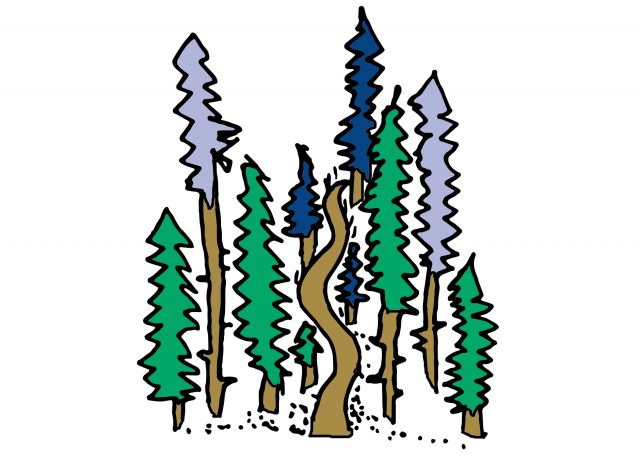
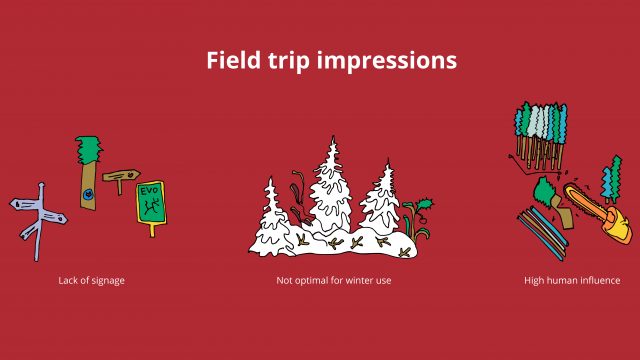
For the second phase of the course, we have been focusing on the ‘Systems Perspective’. We built on the data collected thus far to form a more holistic view of the brief and the problem we would like to address. We began this process by expanding on our initial ‘affinity diagram’ (where we mapped our key findings from the desktop research on a post-it note wall) to include key quotes and insights from our interviews.
In the pictures below, you can see how our understanding has grown from week 2 to week 6:

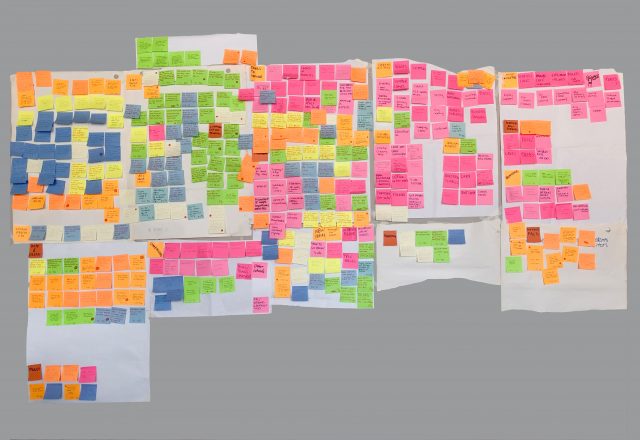
After we felt satisfied that all our data was represented on the affinity diagram, we began to structure our points into categories and visualised the relationships between different stakeholders. Through this process we identified education, human well-being and ecosystem health as being important leverage points for us. We used systems mapping to illustrate the problems and needs of our stakeholders and with Mengxiao’s excellent illustrator skills our post-it notes were transformed into a complex systems map.
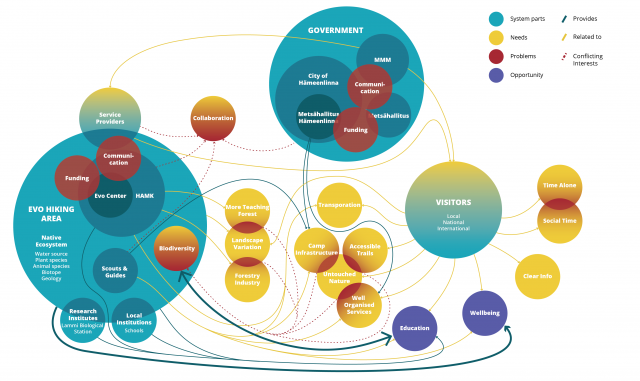
Evo Hiking Area has a unique history as the home of Finnish forestry education and currently includes a teaching forest managed by HAMK University and nature reserves. The area is frequently used by the nearby Lammi Biological Station and scout groups who have a unique educational agenda. We also discovered that local primary and secondary school teachers would like to use the area more to teach children about nature. Andreas helped to understand the relationships between these educational institutions via a second systems map.
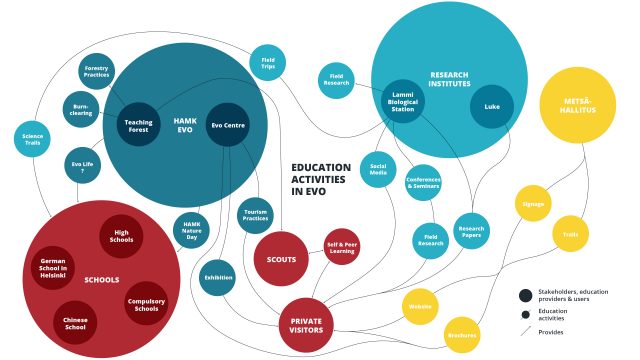

We also identified that these activities are only possible if the native ecosystem is properly looked after and respected. We spoke with biologists and a conservationist working in the field to better understand the ecosystem perspective. On the one hand the extinction plant and animal species is happening at faster rate than ever before and one the other we are loosing our knowledge about the natural world. “The ‘collective memory’ is not maintained and there is a lack knowledge of what once grew,” according to biologist Annette Sode.
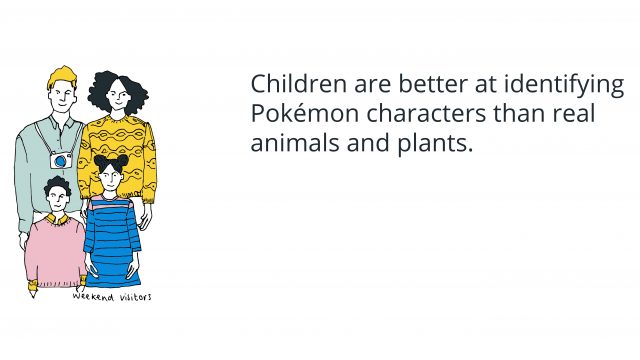
In the context of Finnish Hiking Areas, it is essential that education and respect for nature is promoted.
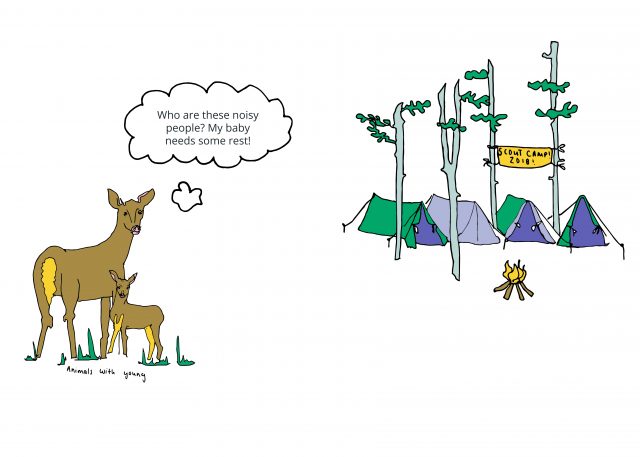

We used Peter Checkland’s ‘rich picture’ technique to illustrate the ecosystem’s complex role in providing education, work and leisure time in Evo.
Looking forward, we will focus on two key research questions for the final ‘intervention’ phase of the project. We aim to consider the potential for Hiking Areas, in particular Evo Hiking Area, to provide meaningful nature experiences which raise awareness for the natural ecosystems on which we all rely.
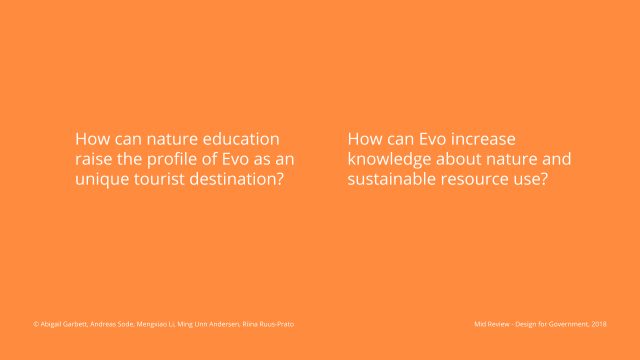
The DfG course runs for 14 weeks each spring – the 2018 course has now started and runs Feb 20 to May 22. It’s an advanced studio course in which students work in multidisciplinary teams to address project briefs commissioned by governmental ministries in Finland. The course proceeds through the spring as a series of teaching blocks – Human Perspective, Systems Perspective and Intervention Perspective – in which various research and design methods are applied to addressing the project briefs. Blog posts are written by student groups, in which they share news, experiences and insights from within the course activities and their project development. More information here about the DfG 2018 project briefs. Hold the date for the public finale 09:00-12:00 on Tuesday, May 22!
